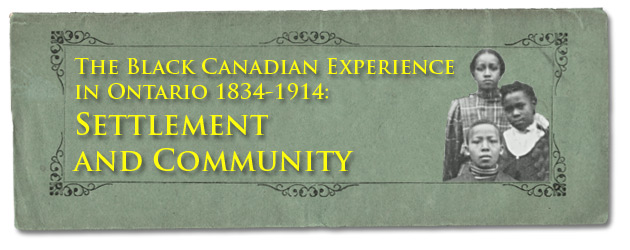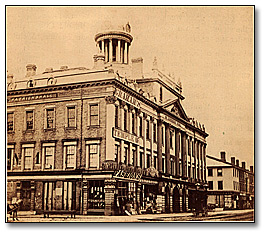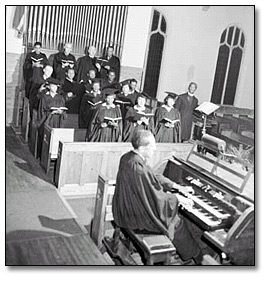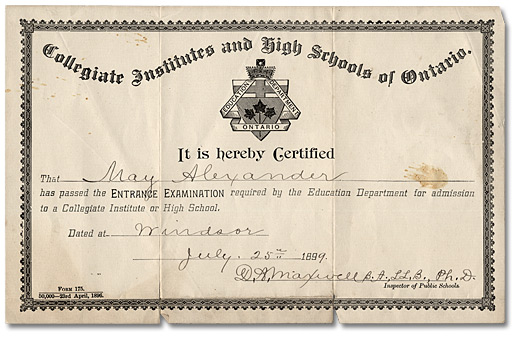
Table of Contents
Settlement and Community | Community of Interest
|
During the Underground Railroad era, from 1834 to 1865, Ontario was a fast developing province with Toronto as the economic and cultural centre. Toronto was also the centre of abolitionism resulting in more acceptance and advocacy on issues of concern to Black Canadians. In 1851, at the First Convention of Colored Freemen held outside of the United States at Toronto’s St. Lawrence Hall, Canada was declared to be the best place in the world for Black people to live. |
|

|
Delegates found support, acceptance, housing, employment and a standard of living that made it possible for the descendants of those in slavery to become citizens of a society that protected their freedoms.
Click to see a larger image (117K)
|
|
|
|
|
Newly arrived Black people might land in Windsor, Niagara Falls or Toronto, or the all-Black communities of Dawn, Elgin or Wilberforce, but later move to other areas in search of family members, an urban home or a market for their skills.
Click to see a larger image (95K)
|
![Photo: Boys with wheelbarrows in the streets of Amherstburg, Ontario [ca. 1895]](pics/27816_wheelbarrows_270.jpg) |
![Photo: Ara Wilson, Henry Banks Jr., Roy Banks, Fremont Nelson: cooks aboard a steamboat, [ca. 1890]](pics/24829_men_in_kitchen_520.jpg)
Click to see a larger image (214K)
|
|
|
They moved into every city and town in Ontario – or resided on the borders of these settlements. |
|

|
After they built their homes they constructed churches – many of which are
still in use today. Churches formed the heart of the community, serving many purposes
from spiritual space to debating forum. Often these structures housed schools.
Click to see a larger image (121K)
|
![Photo: Baptist Sunday School group in Amherstburg, Ontario, [ca. 1910]](pics/27813_sunday_school_520.jpg)
Click to see a larger image (306K)
|
|
|
|
|
|
No matter where they settled, for the newly arrived, freedom meant building a home for one’s family, a church for the community, and a school for the development of future generations. |
|

Click to see a larger image (270K)
|
|
|
|
|
![Tintype: Unidentified woman in formal dress, [ca. 1870s]](pics/27803_woman_270.jpg)
Click to see a larger image (141K)
|
![Photo: Orri [?] Smith, son of James Smith of Amherstburg, Ontario, [ca. 1870s]](pics/27804_orri_smith_270.jpg)
Click to see a larger image (96K)
|
|
|
|
Previous | Home | Next
And they Went to Canada | Freedom Under the Lion's Paw |
Settlement and Community
Community of Interest